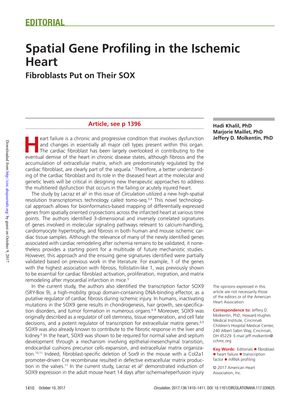Spatial Gene Profiling in the Ischemic Heart
October 2017
in “
Circulation
”

TLDR A new technology showed that the SOX9 gene might control heart scar formation after injury, suggesting new treatment possibilities.
The 2017 study by Lacraz et al. introduced a novel high-spatial resolution transcriptomics technology called tomo-seq to map differentially expressed genes in ischemic cardiac tissue samples from humans and mice. The technology revealed 3D gene signatures related to calcium-handling, cardiomyocyte hypertrophy, and fibrosis. One key finding was the identification of the transcription factor SOX9 as a potential regulator of cardiac fibrosis during ischemic injury. SOX9 was found to be induced in the adult mouse heart after ischemia/reperfusion injury and in human ischemic heart disease samples. The study also showed that heterozygous Sox9-loxP deletion in mice reduced the fibrotic response after ischemic injury. The research highlighted the importance of SOX9 in cardiac fibrosis and suggested that it could regulate a unique subset of fibrosis genes that might help with scar stability after acute ischemic injury. This opens up new avenues for therapeutic approaches to diseases where cardiac fibrosis is a significant issue.